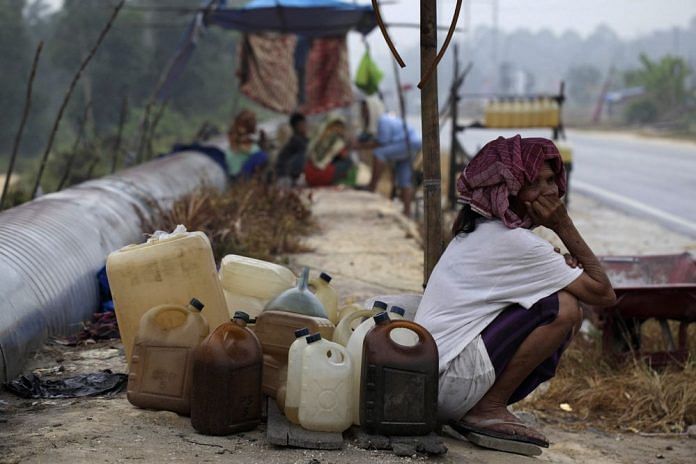India has some of the least affordable transport fuel in the world, with a gallon (3.8 litres) of petrol costing more than three-quarters of average daily income.
With Brent crude surging north of $85 a barrel and some analysts warning that $100 is just around the corner, it’s comforting to remember that we’re still a long way from 2008, when oil hit an all-time record of $147.50.
Comforting, but wrong. For much of the world’s population, we’re already at or near the worst levels endured during the 2008 price spike.
While dollar Brent still looks relatively subdued compared to its frenzy a decade ago, it’s a different story when priced in emerging-market currencies. In Brazilian reais, oil blasted through its 2008 record back in March and is now nearly 50 per cent more costly. In Mexican pesos, Brent overtook that year’s levels back in May; and within the past month Polish and South African prices have also moved above their decade-ago peaks. India and Indonesia aren’t far behind.
With emerging-market currencies falling against the greenback, the rising dollar price of crude is compounded for consumers in less wealthy countries. This dynamic helps explain why Brazil went through a crippling truck-drivers’ strike in May. It also sheds light on the recent political rise of far-right populist Jair Bolsonaro, who could be within sight of the country’s presidency in elections that begin Sunday after backing the protests.
In Mexico, it contributed to the political rebirth of Andres Manuel Lopez Obrador, who won the July 1 presidential election on the back of a promise to hold fuel prices in real terms for three years by building more refineries and increasing subsidies.
As we’ve noted before, the same electoral wave could threaten India, too. Thanks to price deregulation and an array of additional taxes imposed on retail fuels during the oil-price slump since 2014, the cost of filling up in India’s cities is at record levels. The country has some of the least affordable transport fuel in the world, with a gallon of gasoline costing more than three-quarters of the average daily income and almost as much as it would set you back in Tokyo.
In Manila, meanwhile, RON 95 fuel now costs just shy of 60 Philippine pesos ($1.10) a liter, almost one-quarter more than it did at the start of the year.
Some countries have mechanisms in place to soften this blow. The world’s governments handed out $105 billion of oil subsidies in 2016, according to the International Energy Agency – a figure that’s likely to have risen substantially since then, given how cheap crude was two years ago.
These measures tend to mollify consumers, but the costs don’t go away. In Venezuela gasoline still costs just 1 cent a liter, but the extreme disparity with neighboring countries fuels an epidemic of smuggling and organized crime along its borders. A more widespread issue is the damage those subsidies do to government budgets, especially as they ratchet higher when the currency falls, forming a vicious circle.
That’s the risk for Indonesia, whose President Joko Widodo abolished gasoline subsidies after coming to office in 2014. He may be tempted to restore them as he heads toward next year’s polls, a factor that S&P Global Ratings cited earlier this year in withholding an upgrade of its debt rating from junk.
Such a move would echo the actions of Malaysian Prime Minister Mahathir Mohamad – who reintroduced subsidies abolished by the previous government after coming to office earlier this year – and Thailand’s junta, which is deploying the country’s oil-stabilization fund to cap diesel prices after a social-media outcry.
The best emerging-market consumers and their governments can hope for is that their own pain at the pump starts to moderate the current tightness in the oil market. With Iranian crude flows facing sanctions next month and Venezuela’s ongoing decline, the supply side of the global trade still looks constrained. But those elevated prices may already be having an effect.
Oil consumption in developed countries has already peaked, according to BP Plc, so all the incremental demand in the future depends on consumers in the emerging world. When they sneeze, the global oil market may yet catch a cold.-Bloomberg




There was talk that oil would not sustain above $ 60, at which price shale oil would come onto the market. That is not working out. The wholly illegitimate sanctions against Iran are causing so much pain in terms of oil prices, even as the unfolding trade war is slowing growth all over the world.